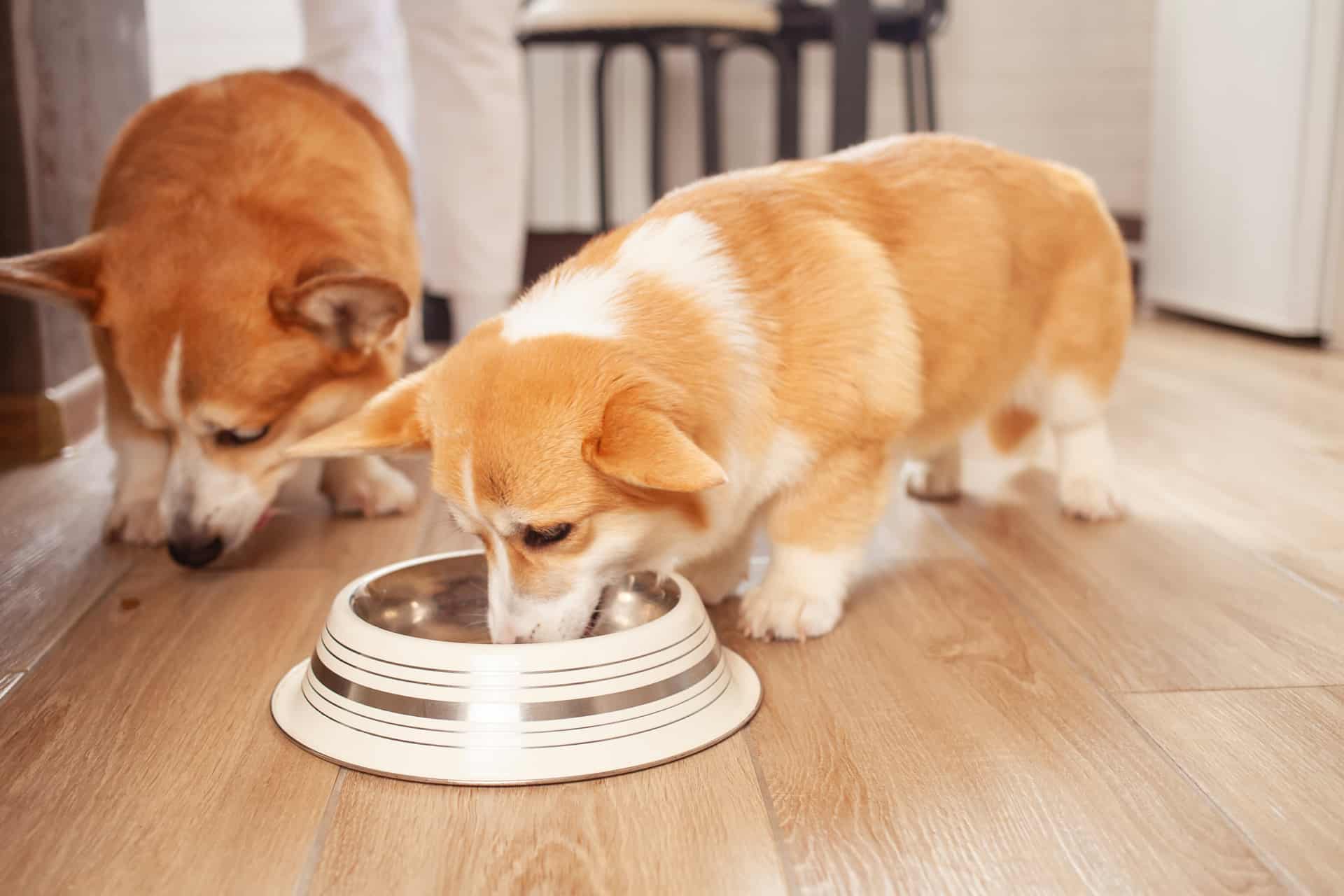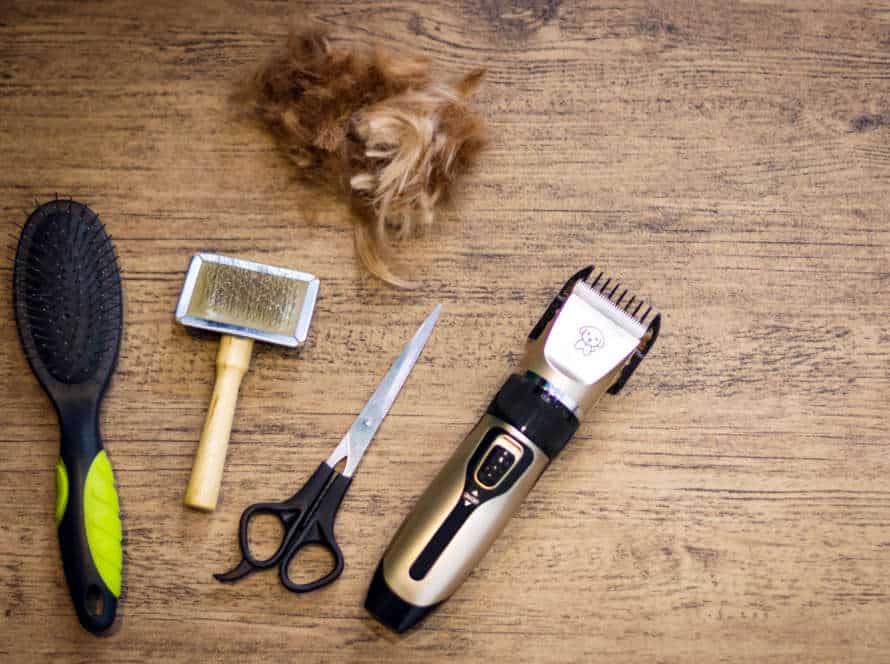Top Tips for Feeding Your New Puppy
Caring for your new pup can be difficult, yet it’s vital to make sure their health and wellbeing is always top-notch. Here are top tips for feeding your pup:
- Choose high-quality puppy food for their nutritional needs.
- Give them three to four small meals, not one or two big ones.
- Set up a feeding timetable for them to have a routine.
- Don’t overfeed, as it can cause obesity and health problems.
- Make sure there’s always fresh, clean water available.
- Don’t give them human food or table scraps, as it can bother their stomach.
Pro tip: Ask your vet what the best diet and feeding plan is for your pup.
Understanding Your Puppy’s Nutritional Needs
Grasp the nutrition your pup needs – a must for a healthy life for your furry buddy! Nutrient-loaded food and combos to make bones strong, and boost their immune system. Follow some key tips to feed your pup right and watch them bloom in health and joy.
Determine caloric requirements based on breed and weight
It’s critical to know your pup’s calorie requirements based on their breed and weight to give them good nutrition and stop overfeeding, which causes obesity. Here’s the way to work out how much calories your puppy needs:
- Look up their breed’s normal weight when full grown.
- Weigh your pup regularly and record the weight.
- Use a doggy calorie calculator to work out the amount of calories needed every day.
- Select a high-quality puppy food that meets their nutrition needs. Feed them according to the recommended portion size based on their weight and caloric need.
Pro tip: As your pup develops, their calorie requirements will change. Make sure to modify their food intake accordingly and talk to a vet if you have questions about their weight or nutrition.
Choose the right type of food (dry, wet or a mix of both)
Selecting the perfect food for your pup is very important. Here are some tips to help you decide:
- Dry food: Good for healthy, active breeds with strong teeth. Affordable and has a long shelf life.
- Wet food: Comes in cans, trays or pouches. High water content. Great for pups that have difficulty chewing or digesting dry food.
- Mixed food: Combining dry kibble and wet food is popular. Offers the benefits of both. Can improve your pup’s appetite.
- Consult with your vet to decide best food for their health and lifestyle.
Pro Tip: Gradually introduce new food. Provide fresh and clean water.
Understand the difference between puppy food and adult dog food
It’s essential for new puppy owners to comprehend the contrast between puppy food and adult dog food. This is to make sure their pet’s dietary requirements are met.
Puppy food is tailored for young dogs’ rapid growth and development. It has higher levels of protein, fat, and calories to give them energy and help form strong muscles and bones.
Adult dog food, however, is made for a completely grown dog. It has even amounts of nutrients to support their general wellbeing, with lower levels of calories, fat, and protein to stop weight gain.
Supplying your puppy the correct type of food at each phase of their growth is critical for their long-term health and joy. Talk to your veterinarian to decide the ideal feeding plan for your new furry companion.
Feeding Schedule for Your Puppy
A puppy’s diet is critical for their health. It should be balanced and consistent. Puppy food, treats, and fresh water are all key ingredients. Let’s explore feeding your pup!
Determine how many meals per day to feed your puppy
Figuring out how much to feed your pup? It depends on their age, size, and breed. Puppies need frequent meals for proper growth. Here are some tips:
- Pups under 3 months need 4 meals a day.
- Between 3 and 6 months, feed 3 times.
- After 6 months, pups need 2 meals.
Remember, these are just general guidelines. Your pup’s needs might be different based on their health and activity level. Get advice from your vet on how much to feed. Plus, always provide fresh water and don’t overfeed. Pro Tip: use a measuring cup to get accurate portions.
Set a feeding schedule and stick to it
It’s essential to have a consistent feeding schedule for your pup. Smaller tummies and faster metabolisms mean they need more frequent meals. Here are some tips:
- Figure out how much and how often to feed them based on breed and age.
- Stick to a schedule; 3-4 meals a day for pups under 4 months and 2 for older ones.
- Get a high-quality puppy food that meets their nutritional needs.
- Don’t give table scraps or human food as it won’t give the right nutrition and could cause digestion problems.
- Monitor their weight and adjust food and portions accordingly.
Consistency is vital for a pup’s diet – it helps them stay healthy and get the nutrients they need to thrive.
Avoid free feeding (leaving food out all day)
Don’t free feed or leave food out all day for your pup. It can cause them to become obese, which could affect their health. Put together a feeding schedule and make sure to stick to it! Some tips for feeding your pup:
- Pups have smaller bellies, so feed them smaller, more frequent meals.
- Create a schedule that works for both of you – 3-4 meals a day for pups under 6 months, 2-3 meals a day for older pups.
- Make sure to measure food portions, don’t overfeed.
- Choose quality puppy food that has all the necessary nutrients.
- Don’t give your pup table scraps or human food – it can cause belly upset & weight gain.
Pro Tip: Give access to clean, fresh water at all times!
Choosing the Right Puppy Food
Feeding your pup is essential for their development. Picking the right puppy food can be tough. It’s vital to go for one with lots of vitamins and minerals. Here are some top tips to help you choose the right food for your pooch:
Look for high-quality ingredients and avoid fillers
Picking the correct puppy food is vital for your pup’s wellbeing and development. Here are some great tips to help you decide wisely when buying puppy food:
- Check out the components: The main ingredient should be an excellent source of animal protein, e.g. chicken, turkey, or beef. Avoid recipes with fillers as the first ingredient.
- Avoid filler ingredients: Fillers are low in nutrition and can cause digestion problems for puppies. Don’t settle for recipes that include fillers like corn, wheat, and soybeans.
- Go for a puppy-specific formula: Puppy food should have the right mix of protein, fat, and nutrients to support growth. Choose a formula made especially for puppies.
- Read the label: Select food items that have passed the Association of American Feed Control Officials (AAFCO) standards.
- Think about breed and size: Different sizes and breeds need different nutrition. Opt for food that fits your pup’s size and breed.
Pro Tip: Speak to your vet before changing your puppy’s diet significantly. They can give more specific advice tailored to your puppy’s needs.
Consider your puppy’s age, breed, and nutritional needs
Choosing puppy food is essential. Consider pup’s age, breed, and nutrition needs. This provides the right nutrients for growth. Here are some tips:
- Age: Pick food that suits pup’s age.
- Breed: Different breeds have different diets. Choose food based on breed.
- Nutrition: Puppies need protein, fat, vitamins, and minerals. Make sure food has these.
- Feeding: Create a regular feeding schedule. This helps digestion and stops overeating.
- Treats: Give treats in moderation. Choose low-calorie treats with added nutrition.
Pro-tip: Ask your vet before changing pup’s diet.
Check the nutritional information and avoid foods with too much fat or too many carbohydrates
Picking the proper puppy food is essential for your pooch’s development, energy, and overall wellbeing. One of the major elements to consider when deciding on puppy food is the dietary data. Here are a few tips to help you pick the proper food:
- Check the nourishing info on the wrapping and make certain it fulfills the requirements set by the Association of American Feed Control Officials (AAFCO).
- Stay away from foods with too much fat or too many carbs, as these can cause heftiness, digestive issues, and other medical problems.
- Search for foods with top-notch creature-based protein, such as chicken or fish, as puppies require protein for muscle and tissue development.
- Think about your puppy’s age, breed, activity level, and any medical problems when picking food.
- Step by step transition your puppy to another food over several days, combining the new and old food to avoid digestive distress.
By following these tips, you can guarantee that your puppy gets the nutrition they need to grow up healthy and cheerful.
Proper Portion Control for Your Puppy
Portion control is vital for feeding your puppy. They require smaller, more frequent meals than adult dogs. Here are some tips to guarantee the correct portion size for your pup:
- Know the amount of food your pup needs in one meal.
- Do not overfeed your dog.
- Monitor their portion size and adjust if necessary.
- Feed frequently to ensure your puppy is getting the right amount.
Measure your puppy’s food using a scale or measuring cup
Giving your pup the right amount of food is critical for their health and happiness. A scale or measuring cup is a good idea to get the right portion size and keep their weight in check.
Here are some tips to feed your pup:
- Use a digital scale or measuring cup to measure correctly.
- Give 2-3 small meals daily, not one big one.
- Get high-quality puppy food that suits their breed, age, and activity.
- Offer fresh, clean drinking water every day.
- Avoid giving them table scraps and human food – it can make them obese and unwell.
- Check their weight and body condition regularly and adjust their food accordingly.
Pro tip: Talk to your vet to figure out the right portion size and feeding schedule for your pup depending on their own needs.
Avoid overfeeding – Check the feeding guidelines and adjust as necessary
It’s important to watch your puppy’s nutrition and weight. Here are tips for feeding them:
- Read the food label for portion size and how often to feed them.
- Weigh your puppy regularly and adjust the portion size.
- Don’t feed them human food or table scraps.
- Use treats only sometimes and opt for low-calorie options.
- Always give them fresh water.
- Monitor their portion and you’ll have a healthy, happy pup!
Monitor your puppy’s weight gain and adjust portion size accordingly
Monitoring your pup’s weight is key! Here are some tips for portion control.
- Talk to your vet to figure out your puppy’s daily caloric needs.
- Measure food with a cup, per label instructions.
- Feed your pup regular meals, not free feeding.
- Adjust portion sizes as needed.
- Give treats in moderation and track the calories.
Pro Tip: Gradually switch to a nutrient-rich diet that fits your pup’s age, breed, and size for best long-term health!
Feeding Accessories for Your Puppy
Feeding a new puppy? Must have the right accessories! Bowls, treats and more – consider all the options. Here’s the best of the best for feeding puppies. Get ready!
Choose the right type of bowl (plastic, metal or ceramic)
Selecting the perfect bowl for your pup is important. To guarantee proper nourishment and prevent contamination, here’s what to consider when selecting the right bowl:
Plastic Bowls:
Lightweight, affordable, and come in all colors and styles. But, they can scratch and create spaces for bacteria to grow.
Metal Bowls:
Stainless steel bowls are tough, easy to clean, and resist scratches. Also, they won’t affect the taste of food.
Ceramic Bowls:
Heavier, won’t tip over, and come in many colors and styles. But, they can chip or break with sharp edges that may harm your pup.
Remember: Non-toxic materials, easy to clean, and the right size for your pup’s breed and eating style.
Consider purchasing a slow-feeder bowl to help prevent overeating
Slow-feeder bowls can help puppies eat healthily. Their shapes, like mazes and ridges, slow the eating process. This stops indigestion, bloating, and vomiting. Here are tips for using one:
- Pick a bowl that’s the right size and depth.
- Introduce it slowly. Let your pup get used to it.
- Monitor their eating habits. Adjust food and feeding schedule.
- Use the slow feeder for all meals, not just treats.
Provide fresh, clean water at all times
For a healthy, happy pup, fresh, clean water is a must! Here’s how to supply it:
- Location: Put the bowl in a spot where your pup can reach it easily. Keep it away from the food bowl.
- Refilling: Check and refill the water bowl 2-3 times daily. Puppies may need more frequent refills.
- Cleaning: Clean the water bowl with soap and hot water often. This eliminates dirt and germs.
- Hydration: Give your puppy wet food, or add water to dry food to keep them hydrated.
- Water Bottle: You could get a water bottle attachment for the dog’s crate, if they like it in there. This way, they can access water without making the crate wet and dirty.
By providing fresh and clean water always, you can help your pup stay fit and content.
Potential Health Issues
As a puppy parent, you must be conscious of health issues that can occur from feeding your pup the wrong food. Various breeds and ages of dogs need various diets and a range of foods for optimum health. This section will examine some of the potential health problems that can happen if your pup is fed the wrong food and give advice on how to make sure your pup has a well-balanced and healthy diet.
Recognize signs of food allergies or intolerances
Spotting the signs of food allergies or intolerances in your pup is key to their health. Here’s what to be aware of:
- Scratching: Your puppy could scratch often, specially around their head, ears and paws.
- Digestive issues: Diarrhea, vomiting, gas or bloating after eating could be because of an allergy or intolerance.
- Ear infections: Food allergies or intolerances could cause infection and inflammation to the ears.
- Red and itchy skin: Allergic reactions could lead to red and itchy skin.
- Face rubbing: Your pup might rub their face often if they have a food allergy.
If your pup shows any of these symptoms, it’s essential to get a diagnosis and treatment from a vet.
Discuss your puppy’s diet with your veterinarian
Discussing your pup’s diet with a vet is key for their health and avoiding potential health issues. Here are some top tips:
- Pick high-quality food appropriate for breed and age.
- Give pup small, frequent meals to stop over-eating and boost healthy growth.
- Don’t feed pup table scraps – they may contain harmful ingredients.
- Offer pup clean and fresh water all the time.
By talking to a vet, you can make sure your pup has the right nutrition and a healthy life. Pro Tip: Regular vet check-ups can help monitor their health and diet.
Monitor your puppy’s overall health and well-being
Keeping your pup’s health and joy is essential. Here are some tips to be on top of that:
- Regular Visits: Schedule check-ups with the vet to make sure your pup is good.
- Vaccinations: Vaccinate your pup to protect them from sickness.
- Good Nutrition: Feed them a balanced diet according to their breed, age, and weight. No overfeeding or table scraps.
- Obesity Prevention: Stop obesity before it starts. Exercise with your pup and limit their eating.
- Behavior Changes: If you notice any odd behaviors, like no appetite or being inactive, act quickly and get your pup to the vet.
By following these steps, your pup will have a great life.
Frequently Asked Questions
Q: How often should I feed my new puppy?
A: Puppies should be fed three to four times a day until they are 4-6 months old. From 6 months to 12 months, they can be fed two to three times a day. After 12 months, most puppies can be fed on a once-a-day schedule.
Q: What type of food should I give my new puppy?
A: Look for high-quality puppy food that is specially formulated for puppies. The food should be rich in protein, carbs, and fats, and it should have no artificial additives or fillers. It’s important to avoid feeding your puppy human food or table scraps.
Q: How much should I feed my new puppy?
A: The amount of food your puppy needs will depend on their size, breed, and activity level. Always follow the feeding guidelines on the dog food packaging, and make sure to adjust the portion sizes as your puppy grows.
Q: When should I give my new puppy water?
A: Your puppy should have access to clean, fresh water at all times. Keep a water dish near their food bowl, and refill it frequently throughout the day.
Q: What treats are safe for my new puppy?
A: Look for small, soft treats that are specially formulated for puppies. Avoid giving your puppy hard bones, rawhide chews, or anything that is too large or too tough for them to chew safely.
Q: When should I switch to adult dog food?
A: Most puppies can switch to adult dog food when they are 12-14 months old. However, the timing may vary depending on the breed and size of your dog. Talk to your veterinarian to determine the best time to make the switch.







